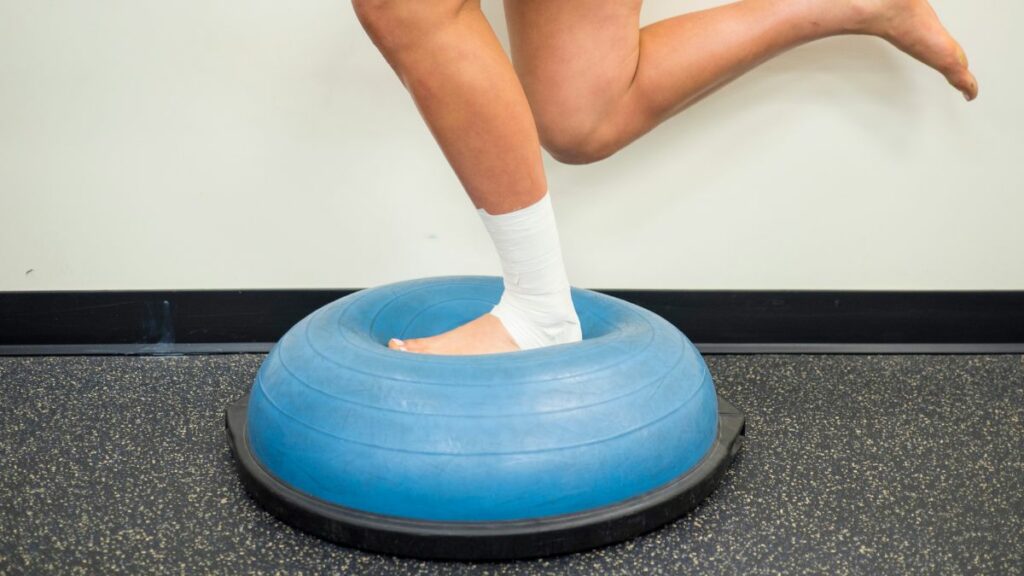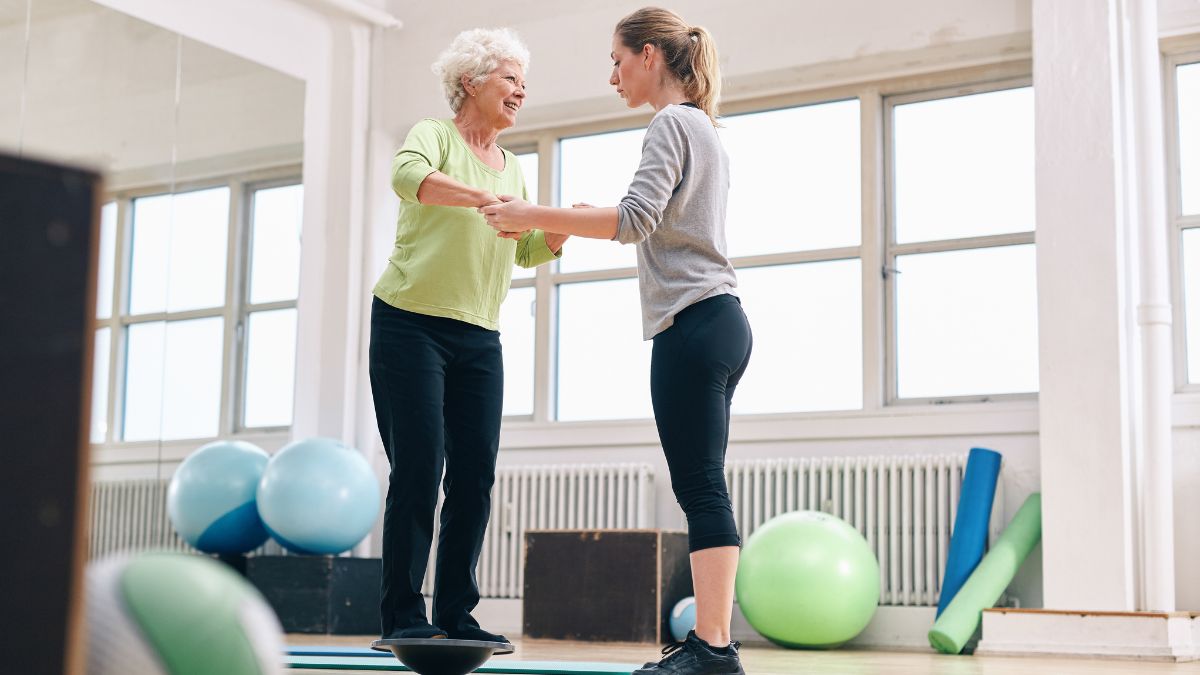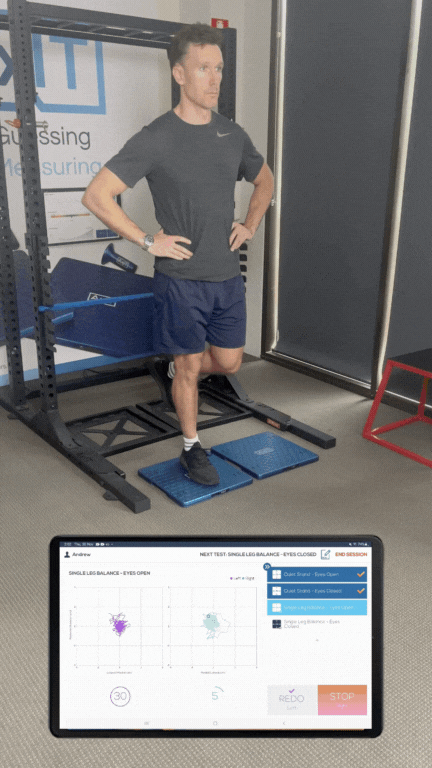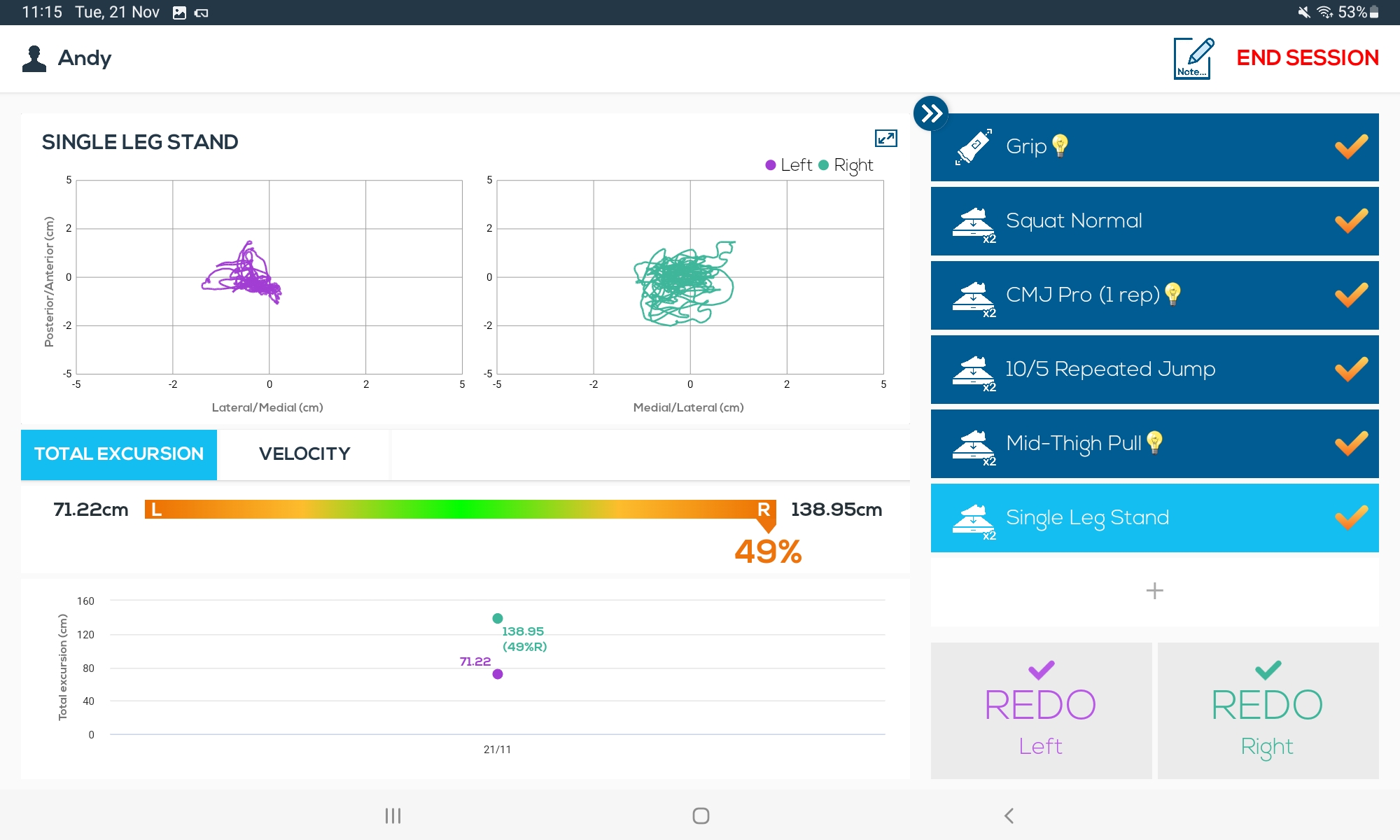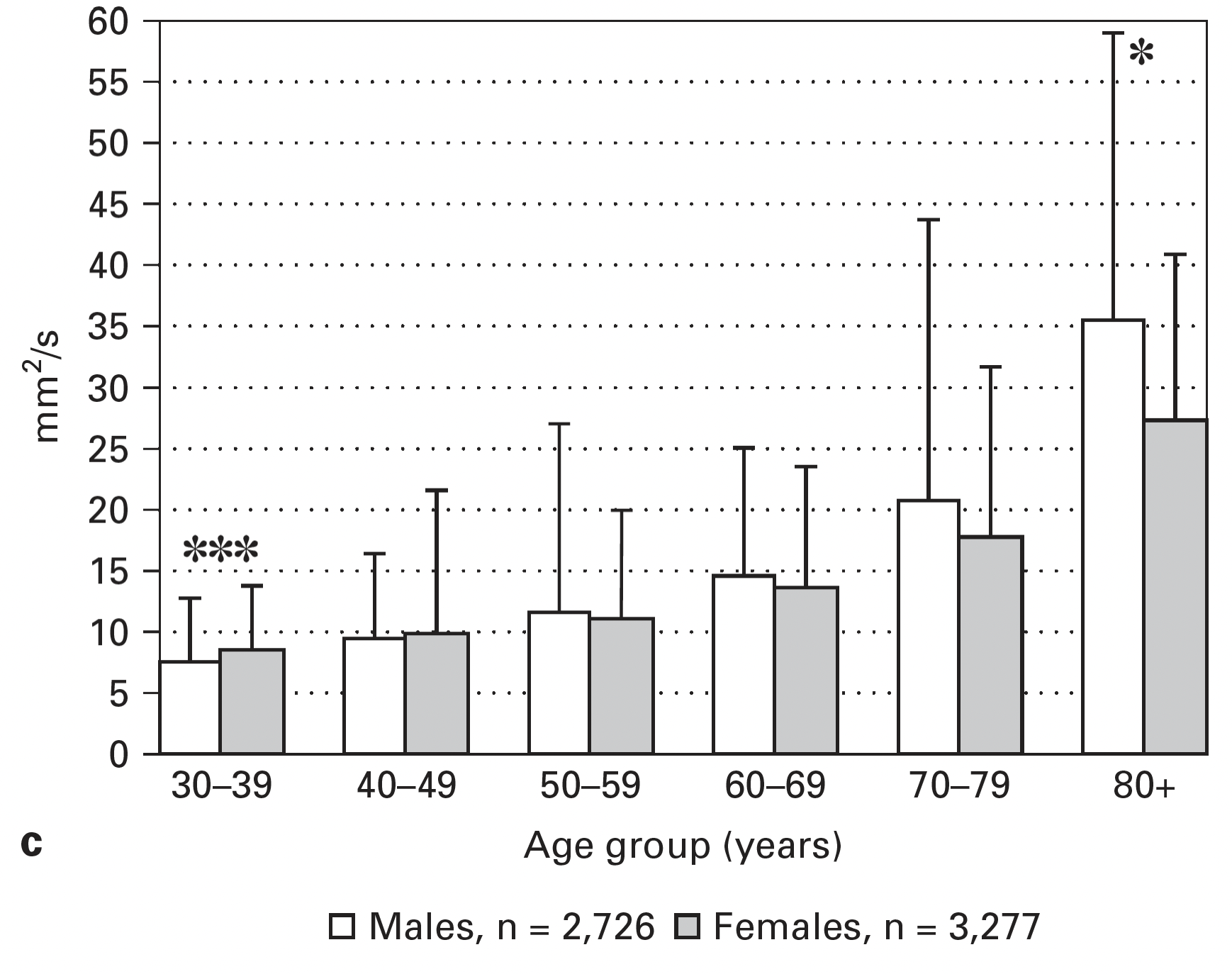Balance is a fundamental component of physical well-being, and the maintenance of it is hugely important to society. It has often been attributed as an important factor in falls prevention programs which can have a dramatic influence on people’s quality of life. In fact, in Australia alone, the cost of treatment of injuries from falls in older people came at a price tag of over $2.3 billion in 2020 including multiple flow-on effects for ambulance services, loss of independence by older people, and family impact.
But it is not just older people that need balance, it also plays a vital role in daily activities and athletic performance. In this blog post, we’ll explore the utility of static balance assessment in the form of measuring Centre Of Pressure (COP) using force plates such as AxIT Stomp-IT, the key metrics involved, and how health and fitness professionals can leverage this information for better client outcomes.
Why Balance Assessment is Useful
As mentioned previously balance has a huge impact on the quality of movement. This can happen in different ways.
Foundation of Movement: Static balance is the foundation upon which dynamic movements are built. Often if someone has difficulty balancing in a non-dynamic way they will struggle more when things become more dynamic. It provides insights into an individual’s ability to control their body position and posture, which are essential for activities ranging from simple daily tasks to complex athletic maneuvers.
Injury Prevention: Identifying imbalances or deficiencies in balance may help predict and prevent injuries. Addressing these issues proactively can contribute to improved joint stability and control, potentially reducing the risk of falls and other accidents.
Performance Enhancement: Athletes can benefit from balance assessments as they provide valuable data for optimizing training regimens. Improved balance and movement control can enhance agility, coordination, overall athletic performance and may be sports specific qualities for certain activities.
Clients Who Benefit From Balance Assessment
- Older Falls Prevention Clients: Increased postural sway is a risk factor in fall prevention (Phelan et al 2015). Static balance assessments are particularly valuable for older adults aiming to prevent falls. These assessments provide insights into the client’s ability to maintain stability, crucial for preventing accidents that could lead to serious injuries. For this demographic, balance assessments guide tailored exercise programs that focus on enhancing stability and reducing the risk of falls, thereby promoting long-term independence.

- Older Clients with Osteoarthritis: Individuals grappling with osteoarthritis often face challenges in joint stability and perform significantly worse on balance-related testing compared to healthy individuals of similar ages (Hatfield et al 2016). By identifying and targeting areas of instability, health and fitness professionals can design exercise programs that alleviate discomfort and enhance overall mobility for older clients managing osteoarthritis.
- Early Stage Return to Sports Athletes: Athletes in the early stages of returning to sports after an injury can benefit significantly from static balance assessments as often centre of pressure can be impacted post-injury. For example, a study by Fernandes et al 2016 found that athletes with ACL injury had greater lateral displacement of the COP under the closed eyes condition as detected by a single leg balance assessment. These assessments provide valuable data on the athlete’s ability to regain equilibrium and control following an injury-induced hiatus. Health and fitness professionals can use this information to create targeted rehabilitation programs that focus on rebuilding strengthened proprioception before progressing to more challenging exercise tasks.
- Clients with Neurodegenerative Disease: For clients grappling with neurodegenerative diseases, static balance assessments serve as crucial diagnostic monmitoring tools. For example Wodarski et al 2023 found the deterioration of balance-keeping ability in patients with Parkinsons Disease may be observed in the changes of parameters, such as the mean COP velocity or an increase in the range of the COP movements. Health and fitness professionals can utilize this information to design tailored exercise programs that address the unique needs of clients with neurodegenerative diseases, promoting improved mobility and quality of life. Regular assessments also enable professionals to monitor changes in balance over time and adapt interventions accordingly to help maintain balance ability.
What Type Of Balance Assessments Can Be Performed On Force Plates?
- Quiet Stand: During the Quiet Stand test, the individual stands on the force plate with both feet shoulder-width apart in a relaxed stance. The task is to maintain a steady and quiet stance for a specified duration, typically with eyes open and then closed. Typically this is used for:
- General Postural Stability: This test provides a baseline measure of an individual’s overall postural control during a static stance. It assesses the ability to maintain balance in a quiet and controlled environment.
- Eyes Open vs. Eyes Closed: Performing the Quiet Stand with eyes closed challenges the reliance on visual input and highlights the contribution of somatosensory and vestibular systems to postural control.
- Single Leg Stand: In the Single Leg Stand test, the individual stands on one leg on the force plate, typically with the non-weight-bearing leg flexed at the knee. The task is to maintain this position for a specific duration, and can once again be performed with eyes open and closed. This assessment focuses on the ability to balance on a single leg, placing greater demand on the supporting leg and associated musculature. It is particularly relevant for activities that involve single-leg weight-bearing, such as walking and running or when tracking the progression of a lower limb injury such as Ankle Sprain.

- Tandem Balance: In the Tandem Balance test, the individual stands on the force plate with one foot directly in front of the other, typically the dominant leg, heel-to-toe, forming a tandem stance. The task is to maintain balance in this narrow stance for a specific duration. This is used mostly to:
- Challenging the Base of Support: The tandem stance reduces the base of support, making it a more challenging task than the Quiet Stand. This assessment targets the ability to balance in a less stable stance.
- Sensitivity to Balance Disorders: Tandem balance tests are often more sensitive in detecting subtle balance impairments, making them useful in clinical settings for identifying early signs of balance disorders and are also commonly used in concussion management testing.
Key AxIT Balance Assessment Metrics
AxIT Stomp-IT measures a client’s Centre Of Pressure (COP) over different time frames or different conditions such as eyes open or eyes closed and provide detailed objective measures of the client’s performance which include:
- Total Excursion: The total distance the centre of pressure a person makes during a balancing task. A smaller total excursion generally indicates better balance control.

- Excursion Velocity: The speed at which an individual sways during the balancing task over a set time. Faster excursion velocities may indicate challenges in balance control. This metric is particularly valuable when comparing the consistency of centre of pressure results of varying time periods or against research studies.For example, a large Finnish study by Era et al (2006) looked at the balance and COP results of people of different genders and age groups establishing normative data that you can compare your clients to.

- Confidence Area: The area covered by 95% of the center of pressure ellipsis during the balancing task. A smaller confidence area may suggest greater stability. This metric can be useful as it will discount major outliers in the balance results, for example one extreme wobble that may throw out the overall balance performance results.
Summary
Static balance assessment using force plates is a powerful tool for health and fitness professionals seeking to enhance their clients’ well-being. By identifying balance deficits or imbalances, professionals can contribute to injury prevention, improved athletic performance, and overall better quality of life by introducing balance and proprioception training programs and then tracking their improvement.
References:
- Hatfield, G. L., Morrison, A., Wenman, M., Hammond, C. A., & Hunt, M. A. (2016). Clinical Tests of Standing Balance in the Knee Osteoarthritis Population: Systematic Review and Meta-analysis. Physical therapy, 96(3), 324–337. https://doi.org/10.2522/ptj.20150025
- Fernandes, T. L., Felix, E. C., Bessa, F., Luna, N. M., Sugimoto, D., Greve, J. M., & Hernandez, A. J. (2016). Evaluation of static and dynamic balance in athletes with anterior cruciate ligament injury – A controlled study. Clinics (Sao Paulo, Brazil), 71(8), 425–429. https://doi.org/10.6061/clinics/2016(08)03
- Wodarski, P., Jurkojć, J., Michalska, J. et al. Balance assessment in selected stages of Parkinson’s disease using trend change analysis. J NeuroEngineering Rehabil 20, 99 (2023). https://doi.org/10.1186/s12984-023-01229-1
- P. Era, P. Sainio, S. Koskinen, P. Haavisto, M. Vaara, A. Aromaa; Postural Balance in a Random Sample of 7,979 Subjects Aged 30 Years and Over. Gerontology 1 July 2006; 52 (4): 204–213. https://doi.org/10.1159/000093652
- Phelan, E. A., Mahoney, J. E., Voit, J. C., & Stevens, J. A. (2015). Assessment and management of fall risk in primary care settings. The Medical clinics of North America, 99(2), 281–293. https://doi.org/10.1016/j.mcna.2014.11.004

